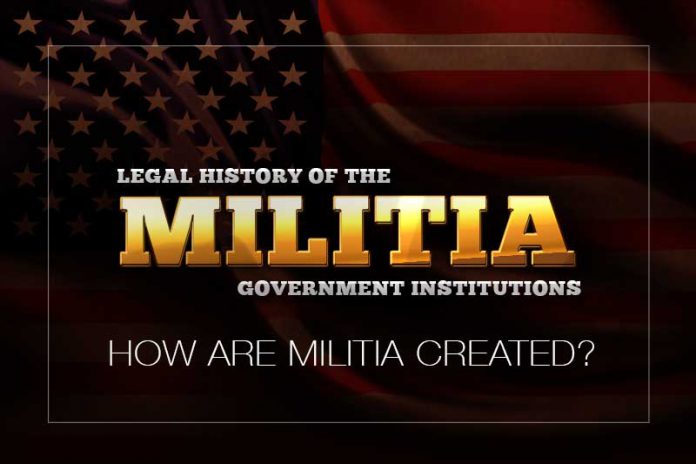Last Updated on August 20, 2022 by Constitutional Militia
Militia Creation
Militia in this America were always the products of charters, ordinances, acts, and statutes—and, as such, they were both created and “regulated” by governments in, and formed parts of the governments of, the Colonies and States. They were not in any way, shape, or form mere private associations which individuals cobbled together and then “regulated” on their own, independent of government.
How are Militia Created?
The original Constitution did not create the Militia. Neither did it empower either the General Government or the States to create any ersatz “militia” from scratch, according to some pattern unknown to American history. Instead, the Constitution adopted and incorporated as permanent parts of its federal system “the Militia of the several States”,[1] just as they existed in 1788 and had existed for decade upon decade—settled and regulated pursuant to statute—before anyone even imagined anything like the Constitution, the Articles of Confederation, or the Declaration of Independence. The Militia thus became (and remain) constitutional entities in their own right, even more than the States or the three branches of the General Government—which should hardly be surprising, inasmuch as the Militia consist of almost the entirety of WE THE PEOPLE themselves, whereas the General Government and the States are merely THE PEOPLE’S creations, representatives, and ultimately servants. Indeed, because of their composition and prior existences, the Militia’s constitutional pedigree was obviously superior to that of the General Government, which WE THE PEOPLE created from nothing, and not inferior even to that of the States, because the Militia existed as parts of all but one of the Colonies’ governments long before the States came into existence as political establishments independent of Great Britain. Under the original Constitution, therefore, Congress was as devoid of power to dissolve the Militia, to change their character, to alter their composition, to substitute different entities in their places, or to create new institutions to compete with them, as it was to take any such actions with respect to the States. And even in the face of a purported constitutional Amendment to such effect, the Militia will retain that status, as to both Congress and the States—because in the final analysis the Militia arise out of WE THE PEOPLE’S authority under the Declaration of Independence, which itself derives from “the Laws of Nature and of Nature’s God”, not the positive laws of the General Government or the States, and therefore which no mere Amendment of the Constitution or any State’s law can negatively affect.[2]





























